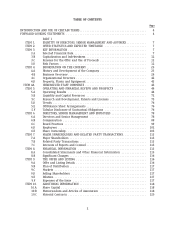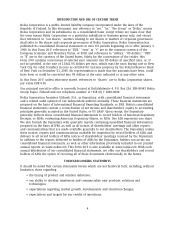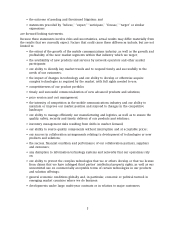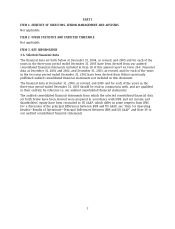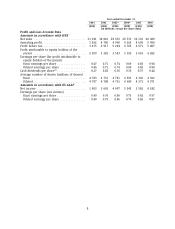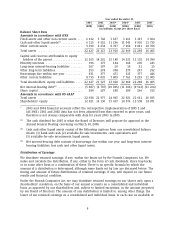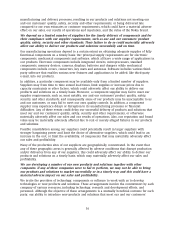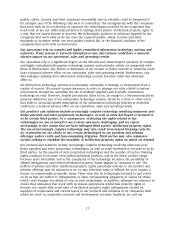Nokia 2005 Annual Report Download - page 14
Download and view the complete annual report
Please find page 14 of the 2005 Nokia annual report below. You can navigate through the pages in the report by either clicking on the pages listed below, or by using the keyword search tool below to find specific information within the annual report.3.B Capitalization and Indebtedness
Not applicable.
3.C Reasons for the Offer and Use of Proceeds
Not applicable.
3.D Risk Factors
Set forth below is a description of factors that may affect our business, results of operations and
share price from time to time.
Our sales and profitability depend on the continued growth of the mobile communications
industry as well as the growth and profitability of the new market segments within that
industry which we target. If the mobile communications industry does not grow as we
expect, or if the new market segments which we target grow less or are less profitable than
expected, or if new faster growing market segments emerge in which we have not invested,
our sales and profitability may be materially adversely affected.
Our business depends on continued growth in mobile communications in terms of the number of
existing mobile subscribers who upgrade or simply replace their existing mobile devices, the
number of new subscribers and increased usage. As well, our sales and profitability are affected
by the extent to which there is increasing demand for, and development of, value-added services,
leading to opportunities for us to successfully market mobile devices that feature those services.
These developments in our industry are to a certain extent outside of our control. For example, we
are dependent on operators in highly penetrated markets to successfully introduce services that
drive the upgrade and replacement of devices. Further, in order to support a continued increase in
mobile subscribers in certain low penetration markets, we are dependent on operators to increase
their sales volumes of lower cost mobile devices, to offer affordable tariffs and to offer tailored
mobile network solutions designed for a low total cost of ownership. If operators are not
successful in their attempts to increase subscriber numbers, stimulate increased usage or drive
replacement sales, our business and results of operations could be materially adversely affected.
Our industry continues to undergo significant changes. First, the mobile communications,
information technology, media and consumer electronics industries are converging in some areas
into one broader industry leading to the creation of new mobile devices, services and ways to use
mobile devices. Second, while participants in the mobile communications industry once provided
complete products and solutions, industry players are increasingly providing specific hardware
and software layers for products and solutions. As a result of these changes, new market segments
within our industry have begun to emerge and we have made significant investments in new
business opportunities in certain of these market segments, such as smartphones, imaging, music
and games in our device businesses, and enterprise mobility infrastructure as well as managed
services, systems integration and consulting businesses in our infrastructure business. However, a
number of the new market segments in the mobile communications industry are still in the early
stages of development, and it may be difficult for us to accurately predict which new market
segments are the most advantageous for us to focus on. As a result, if the segments which we
target grow less than expected, we may not receive a return on our investment as soon as we
expect, or at all. We may also forego growth opportunities in new market segments of the mobile
communications industry on which we do not focus. Moreover, the market segments that we
target may be less profitable than we currently foresee. We may also incur short-term operating
losses in certain of these new market segments if we are not able to generate sufficient revenue
to cover the early stage investments required to pursue these new business opportunities. Our
12


